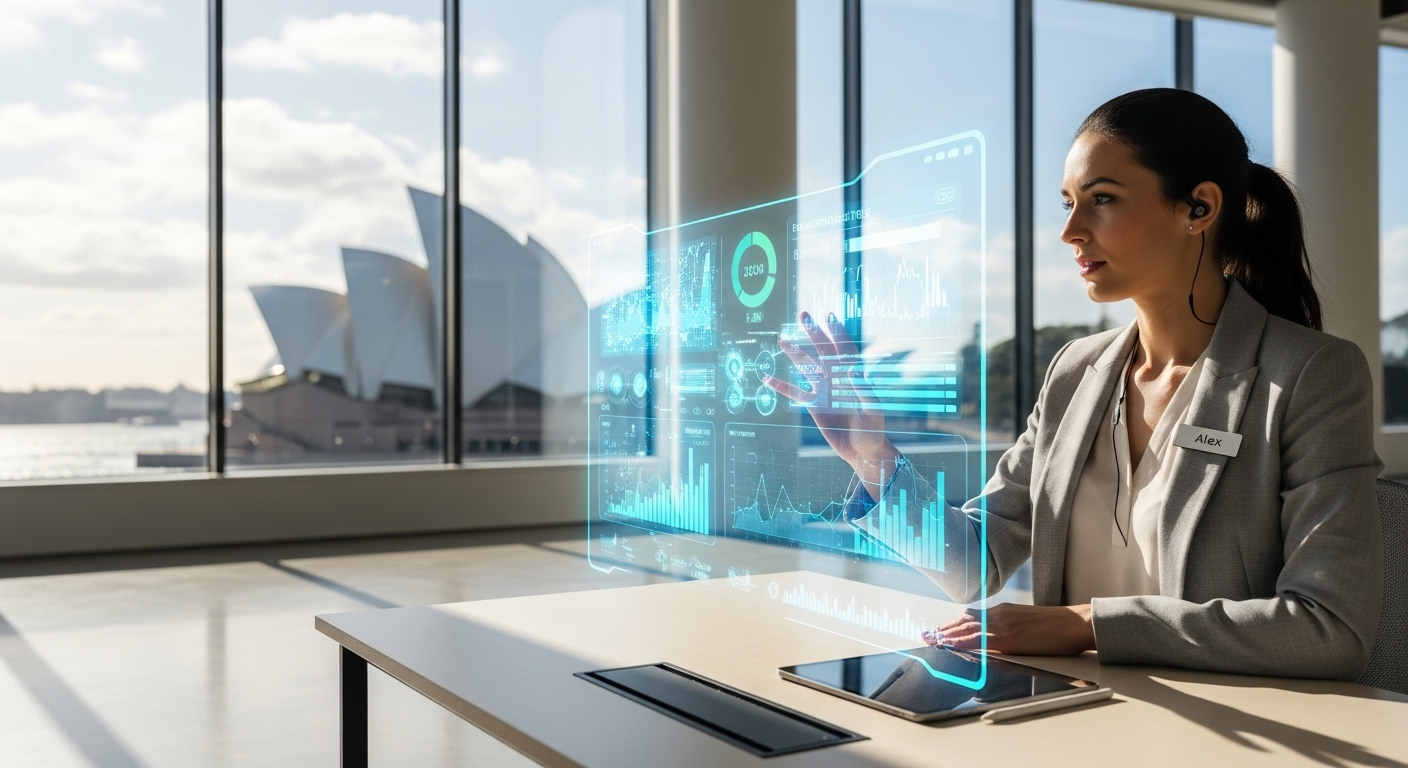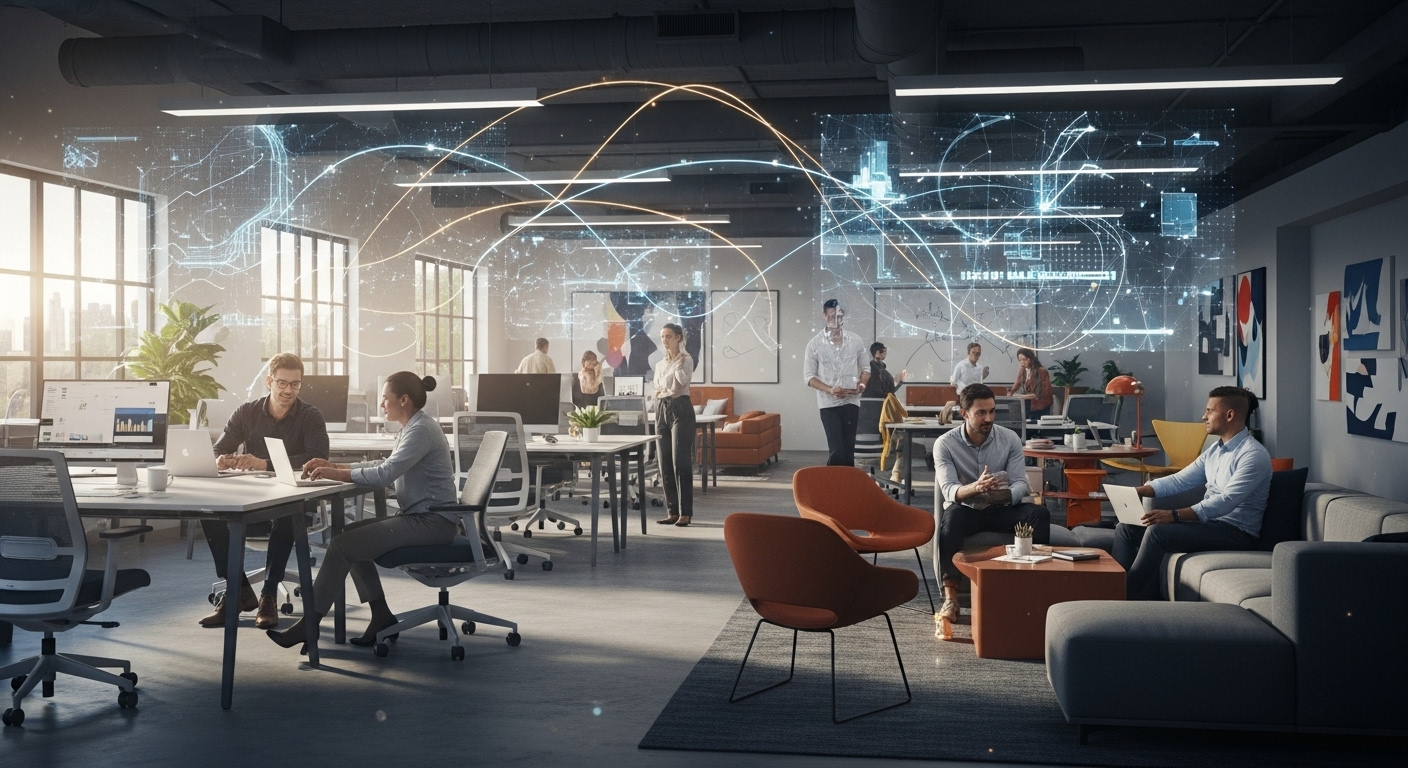In the fiercely competitive modern talent market, the traditional currency of salary and benefits is no longer enough. A new, powerful differentiator has emerged: purpose. Today’s top professionals, particularly millennials and Gen Z, are not just seeking a job; they are seeking alignment with their values, and a company’s commitment to sustainability is paramount. The physical workspace has become the most tangible expression of this commitment. It’s no longer a passive container for work but an active statement of corporate identity and ethics. An office that prioritizes environmental responsibility is more than just a ‘green’ initiative; it’s a strategic tool for talent acquisition and retention. This guide will explore how designing a sustainable workspace can transform your organization into a ‘green magnet,’ attracting the best and brightest. We will delve into the core principles of sustainable design, from energy management and biophilia to the circular economy, and demonstrate how to leverage these investments to build an irresistible employer brand for the future of work.
The New Value Proposition: Why Today’s Talent Demands Sustainable Employers
The contemporary workforce has fundamentally redefined the employer-employee contract. Where previous generations prioritized stability and compensation, today’s talent actively vets potential employers on their social and environmental impact. This isn’t just anecdotal; it’s a data-backed trend reshaping recruitment. Studies consistently show that a significant majority of employees, especially those early in their careers, would choose an employer with a strong sustainability record over one without. For example, a 2021 Deloitte survey found that nearly half of Gen Z and millennials have made career choices based on their personal ethics. The physical workspace is the epicenter of this evaluation. It’s a daily, visible testament to whether a company’s stated values are just marketing speak or genuine commitments. A generic, wasteful office environment directly contradicts claims of being forward-thinking or responsible. Conversely, a workspace that incorporates renewable energy, prioritizes natural light, and eliminates single-use plastics sends a powerful, authentic message. This message resonates deeply with candidates who want to feel proud of where they work. They see a sustainable office not just as a perk, but as evidence of a healthy, conscientious culture that values long-term well-being—for both its people and the planet. Therefore, investing in sustainability is a direct investment in your talent pipeline, creating a compelling value proposition that attracts individuals driven by more than just a paycheck.
Foundations of a Green Workspace: Energy, Water, and Waste Management
Creating a truly sustainable workspace begins with mastering the fundamentals of resource management: energy, water, and waste. These three pillars form the operational backbone of a green office and offer some of the most significant opportunities for immediate impact and cost savings. Energy consumption is a primary target. A foundational step is transitioning to 100% LED lighting, which uses up to 75% less energy and lasts 25 times longer than incandescent lighting. This should be paired with smart controls, such as motion sensors in less-frequented areas and daylight harvesting systems that automatically dim artificial lights when natural light is sufficient. For a deeper commitment, companies can explore installing on-site renewable energy sources like solar panels or purchasing renewable energy credits. Water conservation is another critical component. Simple upgrades like installing low-flow faucets and dual-flush toilets can drastically reduce consumption. For larger facilities, implementing rainwater harvesting systems for non-potable uses like irrigation or toilet flushing offers a sophisticated solution. Finally, a robust waste management strategy is non-negotiable. This goes far beyond placing a few recycling bins. It involves a comprehensive program for separating recyclables, compostable organic matter, and landfill waste, complete with clear signage and employee education. The goal should be to conduct a waste audit to identify major sources of refuse and then systematically design them out of the workflow, such as by eliminating single-use plastics in the kitchen and promoting a paperless culture. Achieving certifications like LEED (Leadership in Energy and Environmental Design) or BREEAM can provide a structured framework to guide these efforts and validate them to the outside world.
Biophilic Design: Connecting Nature, Well-being, and Productivity
Beyond operational efficiency, a truly magnetic sustainable workspace must cater to the human element. This is where biophilic design comes in—the practice of connecting people and nature within a built environment. Far from being a mere aesthetic trend, biophilia is a research-backed strategy that yields significant improvements in employee well-being, creativity, and focus. The core principle is to integrate natural elements directly into the office landscape. This can manifest in numerous ways, from a striking living wall in the reception area to an abundance of potted plants strategically placed throughout the workspace. Maximizing natural light is one of the most impactful biophilic strategies; designing layouts that provide outdoor views and access to sunlight for as many employees as possible has been shown to improve sleep and reduce eye strain. Using natural materials like wood, stone, and bamboo for flooring, furniture, and finishes further strengthens the connection to the natural world. Even incorporating patterns, textures, and colors that mimic those found in nature can have a positive psychological effect. The ROI on biophilic design is compelling.
A study by Human Spaces found that workers in office environments with natural elements reported a 15% higher level of well-being, were 6% more productive, and 15% more creative.
By reducing stress and improving cognitive function, a biophilic environment directly contributes to a healthier, happier, and more effective workforce. It demonstrates a deep-seated commitment to employee welfare, a message that resonates powerfully with talent seeking a supportive and humane place to work.
The Circular Office: Sourcing Sustainable Materials and Furnishings
A sustainable workspace extends beyond daily operations to the very assets it contains. Embracing the principles of a circular economy—a model of production and consumption that involves sharing, leasing, reusing, repairing, refurbishing, and recycling existing materials and products as long as possible—is a crucial step. This approach fundamentally challenges the traditional ‘take-make-dispose’ model of office fit-outs. When sourcing furniture and materials, the focus shifts to longevity, recycled content, and end-of-life planning. Opt for furniture from manufacturers that prioritize sustainability, using materials like reclaimed wood, recycled steel, or fabrics made from post-consumer plastics. Look for certifications like FSC (Forest Stewardship Council) for wood products or Cradle to Cradle, which assesses a product’s safety to humans and the environment and its design for future life cycles. Durability is another key tenet. Investing in high-quality, modular furniture that can be easily repaired, reconfigured, or reupholstered is more sustainable and cost-effective in the long run than purchasing cheaper items that require frequent replacement. A ‘circular’ mindset also means having a clear plan for what happens to items when they are no longer needed. This could involve partnering with companies that specialize in refurbishing and reselling office furniture, donating items to local charities, or working with recycling services that can properly deconstruct and process complex materials. By designing a circular office, you not only minimize your environmental footprint but also create a space with a unique story and character, built on a foundation of responsible consumerism.
Beyond the Physical: Fostering a Culture of Sustainability
A state-of-the-art green building is an excellent foundation, but its impact is multiplied exponentially when paired with an engaged and educated workforce. The most sustainable workspaces are those where eco-conscious practices are woven into the very fabric of the company culture. This transformation from a physical space to a living ethos requires deliberate and continuous effort. A great starting point is to establish a ‘Green Team’ or a sustainability committee comprised of passionate employees from various departments. This team can act as champions for new initiatives, gather feedback, and help drive engagement from the ground up. Consistent communication and education are critical. This includes everything from clear, visually appealing signage on recycling and composting bins to regular updates in company newsletters about sustainability milestones, such as reductions in energy use or waste diversion rates. Host lunch-and-learns or workshops on topics like reducing personal carbon footprints or the importance of biodiversity. To truly embed these values, integrate sustainability into core company processes. Make it a topic in new employee onboarding, ensuring everyone understands the company’s commitment from day one. Introduce friendly competitions or incentives to encourage sustainable behaviors, like challenges to reduce printing or rewards for employees who commute via public transport, biking, or walking. When employees are active participants in the sustainability journey, the office becomes more than just a green building; it becomes a community united by a shared purpose, reinforcing the company’s values in a way that is both authentic and deeply attractive to new talent.
Marketing Your Green Credentials: Showcasing Sustainability in Your Employer Brand
Building a sustainable workspace is a significant investment; failing to communicate it effectively to the talent market is a missed opportunity. To turn your green office into a true talent magnet, you must strategically embed these credentials into your employer branding and recruitment marketing. Your company’s career page is the primary destination for this message. Go beyond a simple statement of values; create a dedicated section that details your sustainability initiatives. Use compelling visuals—photos and videos of your biophilic design, employees enjoying the green spaces, and infographics showcasing your energy and waste reduction data. Tell the story of your journey and highlight any certifications like LEED, WELL, or BREEAM, as these provide powerful third-party validation. Integrate this narrative into your social media content, sharing posts that feature your ‘Green Team’ in action or celebrate sustainability milestones. During the recruitment process, ensure hiring managers are equipped to talk passionately about the company’s commitment. This transforms the conversation from a generic interview into a discussion about shared values. Moreover, it creates an opportunity for candidates to see their potential impact beyond their job description. Publishing a concise, visually engaging annual sustainability report and making it easily accessible can also serve as a powerful proof point for serious candidates doing their due diligence. By proactively and authentically marketing your green workspace, you don’t just attract more applicants; you attract the right applicants—those who are culturally aligned, purpose-driven, and more likely to become engaged, long-term employees.
Conclusion
In the evolving landscape of the future of work, a sustainable workspace is no longer an optional extra or a niche perk. It has become a strategic imperative, a powerful trifecta that simultaneously benefits the planet, enhances employee well-being, and provides a formidable edge in the war for talent. The journey begins with the foundational pillars of energy, water, and waste management, creating an efficient and responsible operational core. It flourishes through the integration of biophilic design, which reconnects employees with nature to boost creativity and reduce stress. It achieves long-term viability by embracing a circular economy for materials and furnishings, and its impact is maximized when a deep-seated culture of sustainability is fostered among all employees. For leaders and hiring managers, the message is clear: your physical environment is one of your most potent recruitment tools. By building and, crucially, broadcasting your commitment to a healthier, greener, and more humane workspace, you create a ‘green magnet.’ This magnet doesn’t just pull in skilled individuals; it attracts dedicated, value-aligned professionals who are eager to contribute to a company that mirrors their own aspirations for a better future. The investment in sustainability is an investment in your people, your brand, and your long-term success.





